New Legume Species Highlights 2021
Compiled by Colin Hughes, University of Zürich, Switzerland
New legume species continue to be described at a steady pace from all continents across the globe. Even in well-studied genera which contain important pulse crops, new species continue to be discovered including the species of Arachis and Cicer described in 2021 which are highlighted here as potentially important crop wild relatives of peanut and chickpea. As might be expected, it is mainly the globally rare species that remain to be discovered in the field and many of the new species highlighted here are narrowly restricted endemics that are threatened or in some cases, critically endangered. It is also notable that newly described species are very often in species-rich genera from areas of high species diversity for those genera. The species highlighted here provide a flavour of the new discoveries of 2021. A full list of taxonomic papers is in the 2021 Legume Bibliography at the end of this issue of the Bean Bag.
Two new Adesmia species from southern Brazil
Adesmia miottoae Cobra, Iganci & Fort.-Perez is a prostrate perennial herb, endemic to the highland grasslands of SE Santa Catarina and NE Rio Grande do Sul in S Brazil. The species epithet honours Professor Silvia Terezinha Sfoggia Miotto for her contribution to studies of Adesmia and other legumes, especially in Rio Grande do Sul, Brazil. In addition, the same authors describe a second new species, Adesmia subtropicalis Cobra, endemic to Rio Grande do Sul and named with reference to its occurrence in transition areas between Pampa (temperate) and Mata Atlantica (tropical).
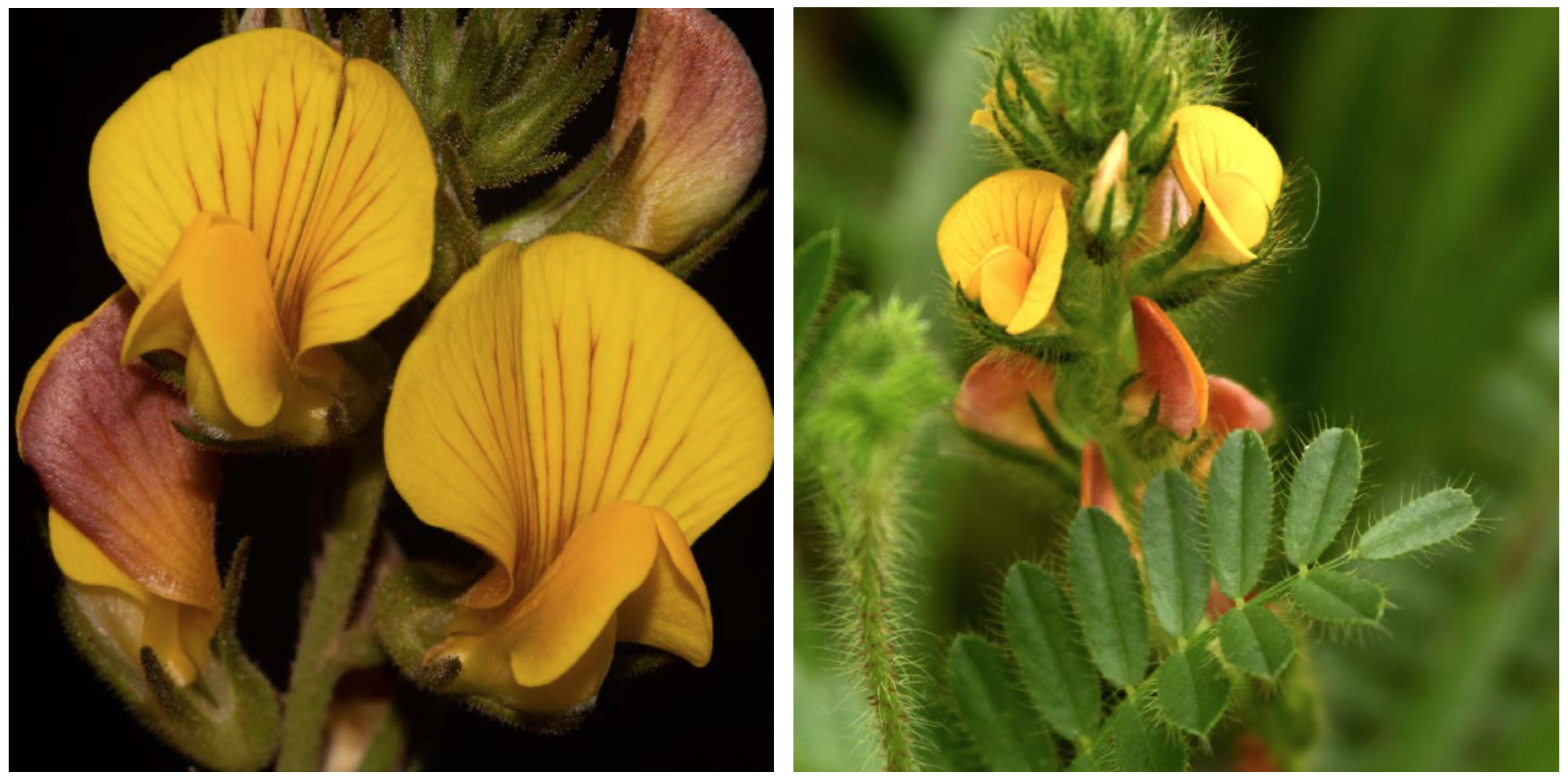
Adesmia miottoae and A. subtropicalis (Photos: Thiago Cobra e Monteiro)
Monteiro, T.C.e., Iganci, J.R.V., Seixas, D.P., Rodrigues, T.M. and Fortuna-Perez, A.P., 2021. A New Species of Adesmia (Leguminosae, Papilionoideae, Dalbergieae) from Southern Brazil, with Notes on Leaf Anatomy. Phytotaxa, 521(1), pp.48-56. https://doi.org/10.11646/phytotaxa.525.1.5
Monteiro, T.C.e., Iganci, J.R.V., Miotto, S.T. and Fortuna-Perez, A.P., 2021. Adesmia subtropicalis (Leguminosae, Papilionoideae, Dalbergieae), a new endangered species from the Brazilian Pampas. Phytotaxa, 521(3), pp.219-226. https://doi.org/10.11646/phytotaxa.521.3.7
Arachis inflata, a peanut with inflated fruits
Despite thorough exploration and characterisation of species and diversity of the crop legume genus Arachis, there are still many field collecting gaps. Recent fieldwork in eastern Bolivia has revealed an interesting and very unusual new species that has been named Arachis inflata Seijo, Atahuachi, C. E. Simpson & Krapov. The specific epithet, inflata, refers to its fruits which have conspicuous air chambers in the pericarp, giving a bullate external appearance, a fruit type that is unique in the genus Arachis.
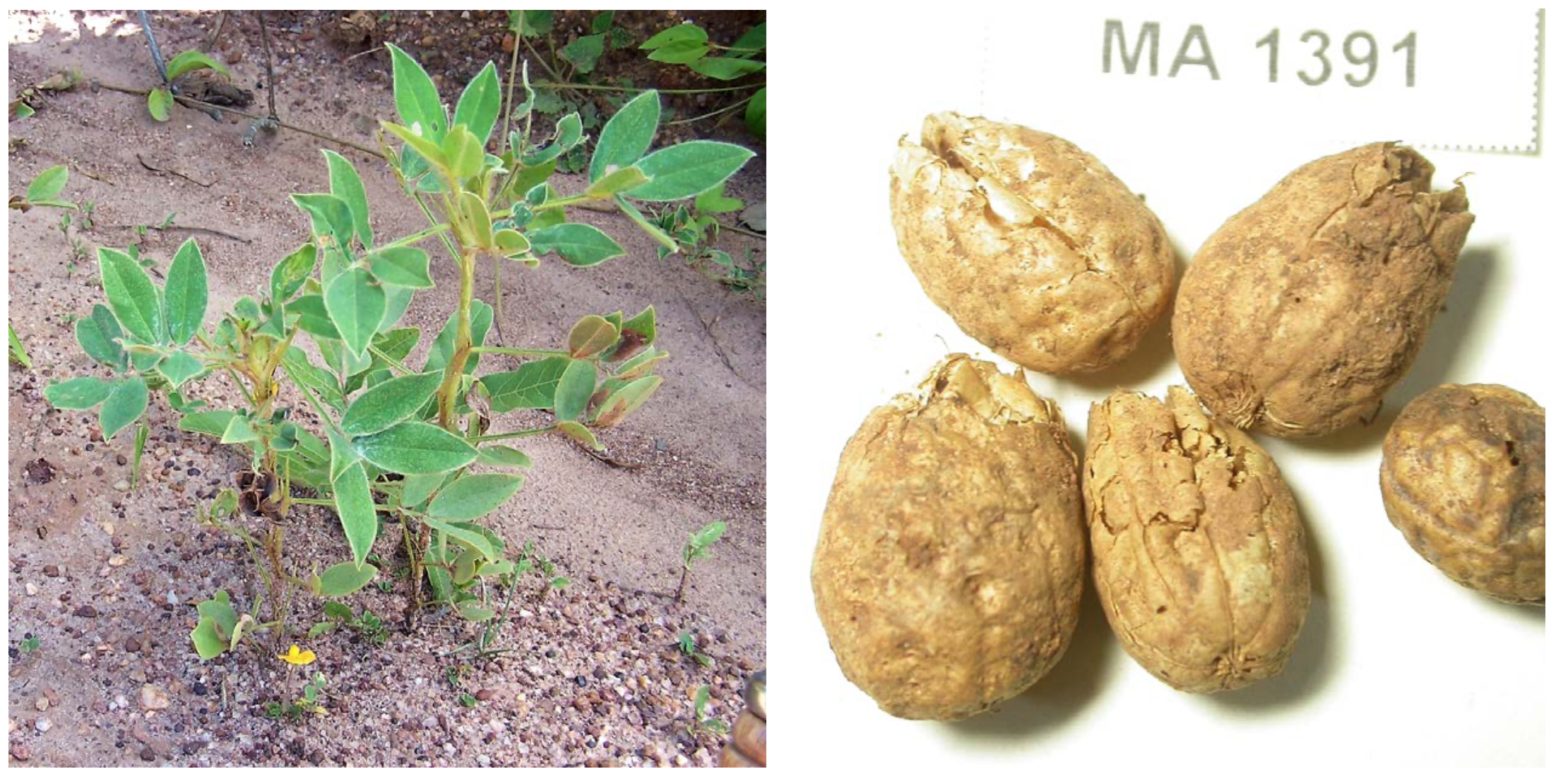 Arachis inflata (Photos: habit, Guillermo Seijo; fruits, Margoth Atahuachi)
Arachis inflata (Photos: habit, Guillermo Seijo; fruits, Margoth Atahuachi)
Seijo, G.J., Atahuachi, M., Simpson, C.E. and Krapovickas, A., 2021. Arachis inflata. Bonplandia, 30(2), pp.169-174. https://doi.org/10.30972/bon.3024942
A critically-endangered Otholobium from the western Cape, South Africa
Like many new plant species discoveries, Otholobium outrampsii C.H. Stirton & du Preez is a narrowly distributed endemic, known from just a single locality in the western Cape of South Africa. Based on field surveys it is judged to be Critically Endangered. The specific epithet honours the members of the Outramps Group of the Custodians of Rare and Endangered Wildflowers (CREW) Programme, who champion the protection of the rare and threatened plants of the southern Cape.
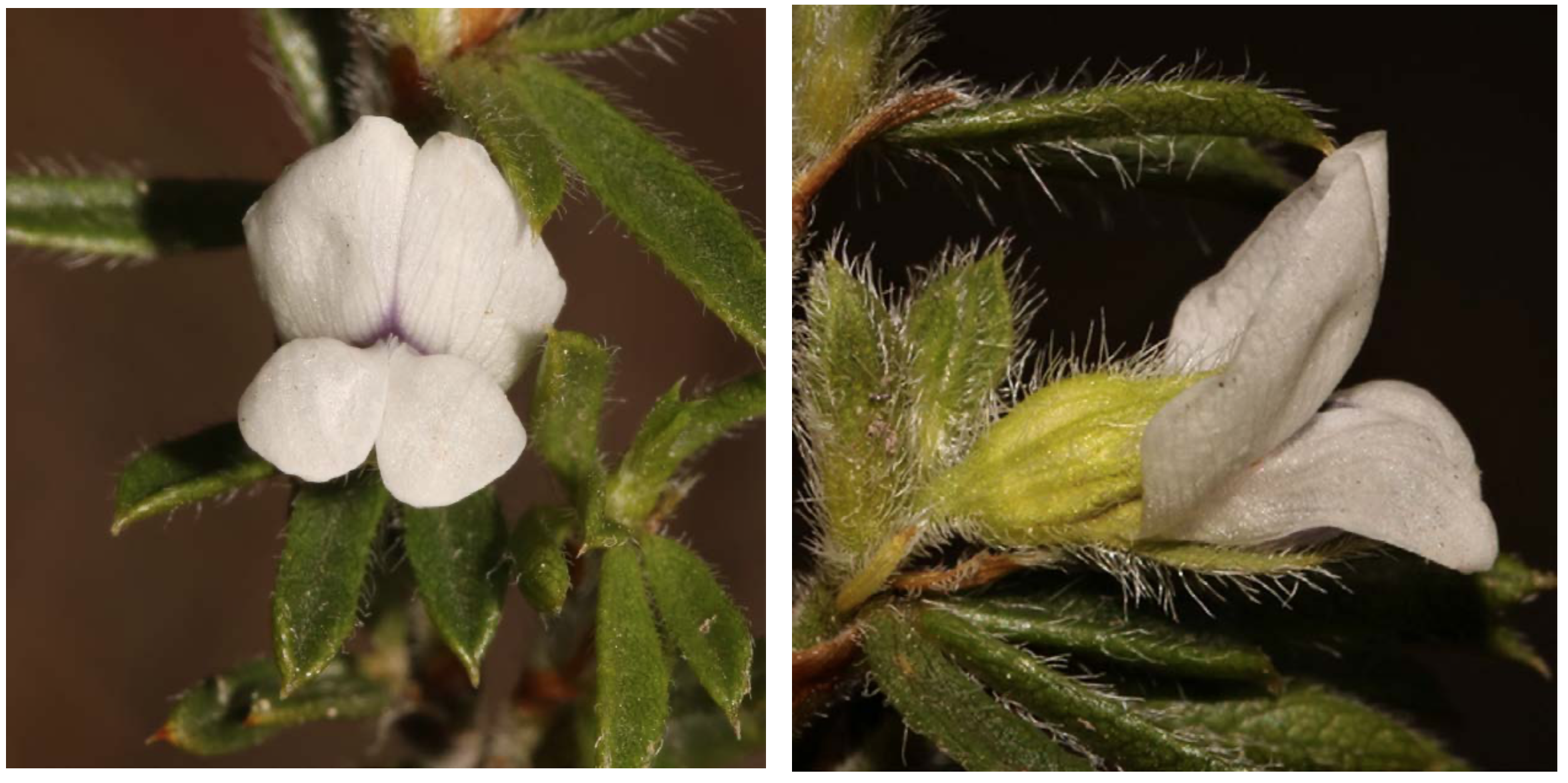 Otholobium outrampsii (Photos: Brian du Preez)
Otholobium outrampsii (Photos: Brian du Preez)
Stirton, C.H. and du Preez, B., 2021. Otholobium outrampsii (Psoraleeae, Fabaceae)-a new species from the Western Cape, South Africa. Bothalia-African Biodiversity & Conservation, 51(2), pp.1-5. https://doi.org/10.38201/btha.abc.v51.i2.5
A critically endangered new species of Antheroporum from northern Thailand
Antheroporum is a small Papilionoid genus of c. five species in tribe Millettieae ranging from China to Indo-China and Thailand, characterised by unusually long petal claws. Like many new field discoveries, Antheroporum puudjaae Mattapha & Tetsana is known only from the type locality, is apparently narrowly endemic in limestone mountains in northern Thailand and is categorized as Critically Endangered. The species was named in honour of Pachok Puudjaa, a long-time collector of plants for the Flora of Thailand project.
 Antheroporum puudjaae (Photos: Sawai Mattapha)
Antheroporum puudjaae (Photos: Sawai Mattapha)
Mattapha, S. and Tetsana, N., 2021. Antheroporum puudjaae (Millettieae: Fabaceae), a new species from Thailand. Thai Forest Bulletin (Botany), 49(1), pp.130-134. https://doi.org/10.20531/tfb.2021.49.1.16
The hyper-diverse genus Astragalus just keeps on growing
It is perhaps no surprise that Astragalus, the largest genus of flowering plants with > 3000 species, is still growing. A steady stream of new species continues to be discovered and described in this hyper-diverse genus. Here, two of the recently described species are highlighted: Astragalus taledensis P. Yan & Huan Zhang, an unusual and distinctive species narrowly endemic in NE Xinjiang Province, China distinguished by its simple leaves and prostrate stems, and Astragalus wiesneri Maassoumi & Pahlevani, a rare species, known only from the type locality in alpine habitats at 3500 – 3850 m elevation in the S Zagros Mountains of Iran.
 Astragalus taledensis (Photos: Huan Zhang) and Astragalus weisneri (Photos: Amir H. Pahlevani)
Astragalus taledensis (Photos: Huan Zhang) and Astragalus weisneri (Photos: Amir H. Pahlevani)
Zhang, H., Ren, S. and Yan, P., 2021. Astragalus taledensis, a new species of Leguminosae from Xinjiang, China. Phytotaxa, 524(3), pp.199-204. https://doi.org/10.11646/phytotaxa.524.3.4
Pahlevani, A.H., Maassoumi, A.A. and Osaloo, S.K., 2020. What is Astragalus wiesneri? Disentangling a new species from its relatives in section Anthylloidei. Anales del Jardín Botánico de Madrid, 77(2), p. 6. Real Jardín Botánico. https://doi.org/10.3989/ajbm.2573
A new species of Campylotropis from SW China
Campylotropis of tribe Desmodieae, subfamily Papilionoideae comprises ca. 37 species centred in SW China which harbours 32 species, of which 20 are endemic, mostly in Yunnan and Sichuan Provinces. An additional species, Campylotropis luquanensis Bo Xu & L.S. Jiang, from that region has recently been described.
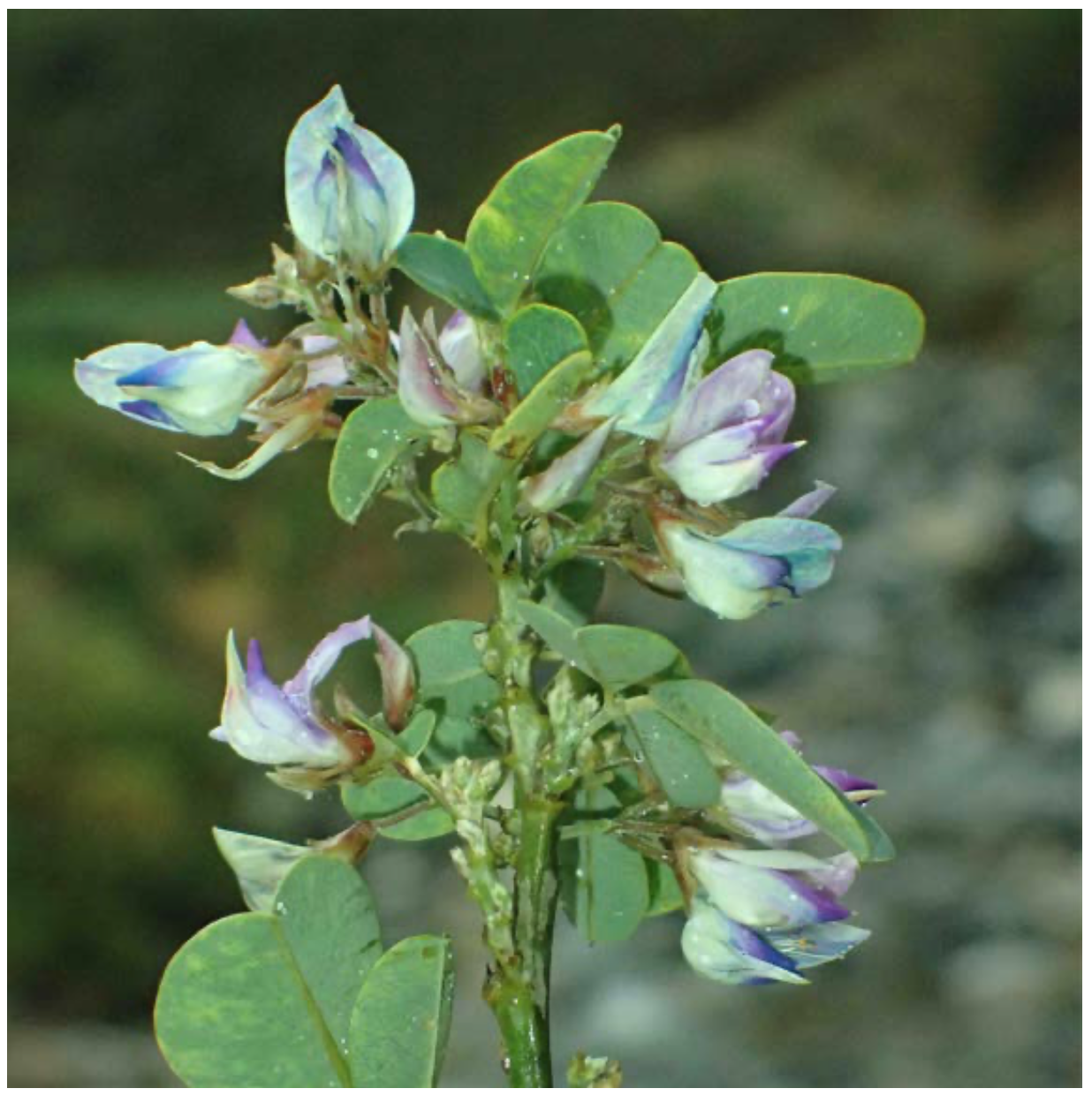 Campylotropis luquanensis (Photo: Bo Xu)
Campylotropis luquanensis (Photo: Bo Xu)
Jiang, L.S. and Xu, B., 2021. Campylotropis luquanensis (Fabaceae: Papilionoideae), a new species from Southwest China. Phytotaxa, 524(2), pp.114-118. https://doi.org/10.11646/phytotaxa.524.2.6
Cicer turcicum, a new close wild relative of chickpea from Anatolia
The discovery of a new annual wild species in the genus Cicer is especially exciting because, as a crop wild relative, it has important potential for genetic improvement of the domesticated pulse crop, chickpea, Cicer arietinum L., or for de-novo domestication in its own right. Cicer turcicum Toker, J. Berger & Göktürk is a narrowly restricted endemic, known from just a single population in SE Anatolia in Turkey, quite distant from any other Cicer species. Cicer turcicum is an annual plant, closely related to C. arietinum and shows enhanced heat tolerance and resistance to bruchid seed beetles compared to chickpea.
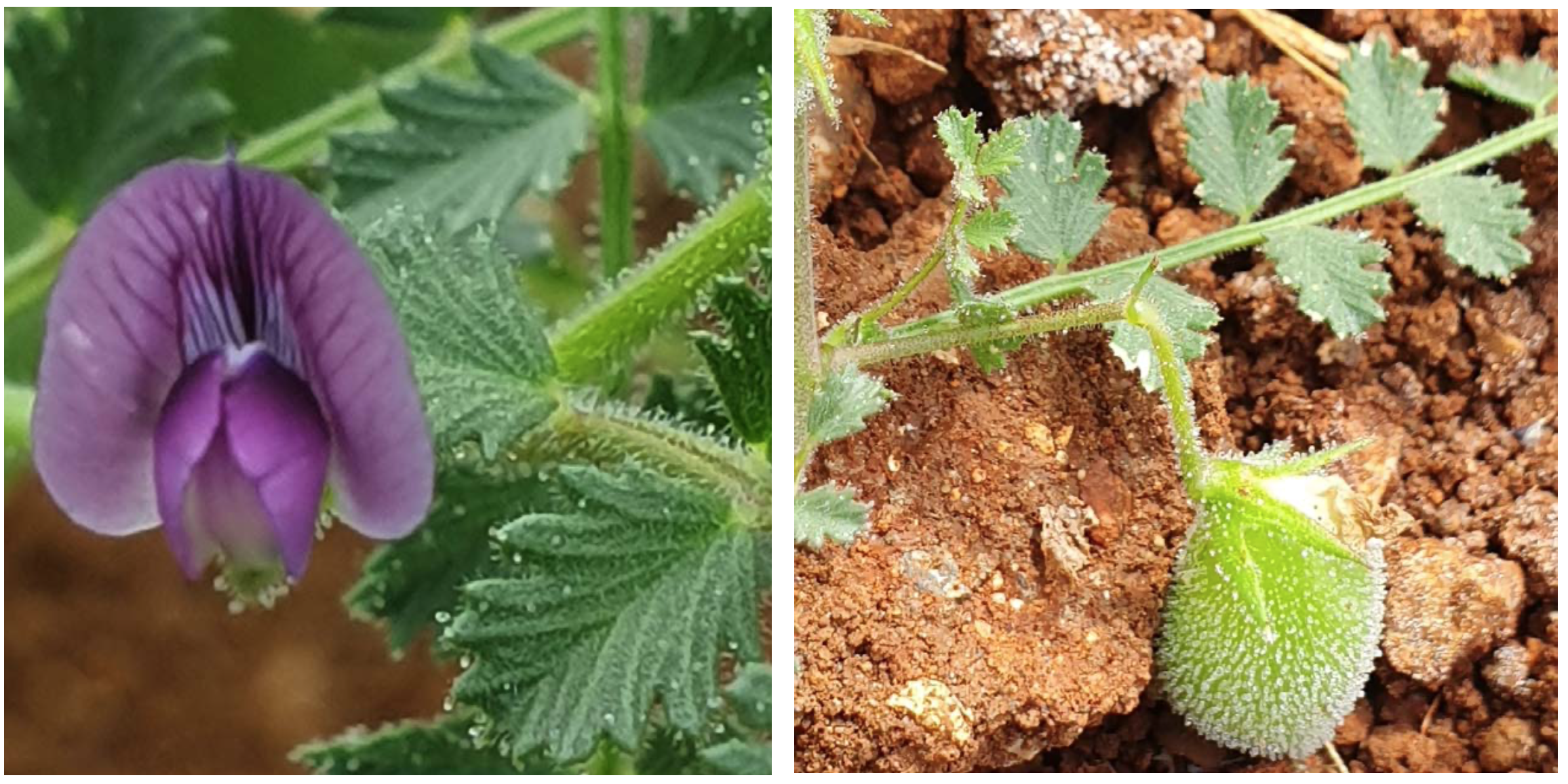 Cicer turcicum (Photos: Cengiz Toker)
Cicer turcicum (Photos: Cengiz Toker)
Toker, C., Berger, J., Eker, T., Sari, D., Sari, H., Göktürk, R.S., Kahraman, A., Aydin, B. and von Wettberg, E.J., 2021. Cicer turcicum: A new Cicer species and its potential to improve Chickpea. Frontiers in Plant Science, 12, p.587. https://doi.org/10.3389/fpls.2021.662891
Harpalyce greuteri: A new serpentine endemic from NE Cuba
Featured on the cover of Issue 68.
Cuba harbours 14 of the 34 species of Harpalyce, most of them serpentine endemics growing in xeromorphic, thorny or sub-thorny thickets. Harpalyce greuteri R. Rankin & P. A. González newly described in 2021 adds yet another serpentine endemic to this impressive tally of Cuban endemics. While the red standard petal colour is not unusual in Harpalyce, this new species differs from other red-flowered species in having an unusual black keel and partially black wing petals.
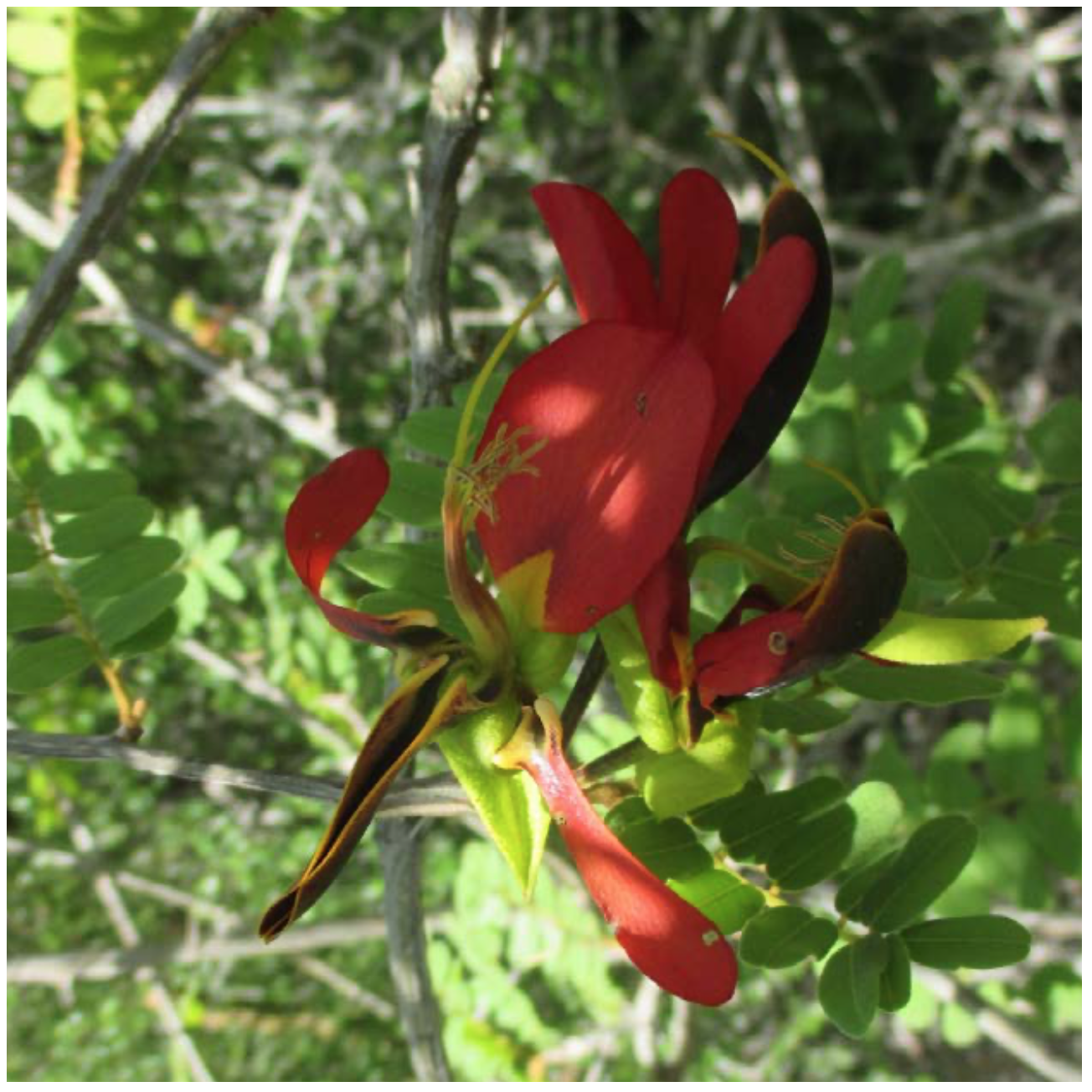 Harpalyce greuteri (Photo: Pedro González)
Harpalyce greuteri (Photo: Pedro González)
Rodríguez, R.R. and Gutiérrez, P.A.G., 2021. Harpalyce greuteri (Leguminosae: Brongniartieae), a new species from eastern Cuba, with a synopsis of and key to the Cuban species of the genus. Willdenowia, 51(2), pp.209-219. https://doi.org/10.3372/wi.51.51204
Mimosa – The census continues
Documentation of the high diversity of Mimosa species in the Brazilian cerrado and campos rupestres continues with the addition of Mimosa pseudoracemosa T.P. Mendes, Marc. F. Simon & M.J. Silva. In common with many fire-resistant mimosas, M. pseudoracemosa is a geoxyle with the leaves arising directly from the underground xylopodium. The species is probably restricted to the Chapada dos Veadeiros National Park, in northern Goiás State, Brazil.
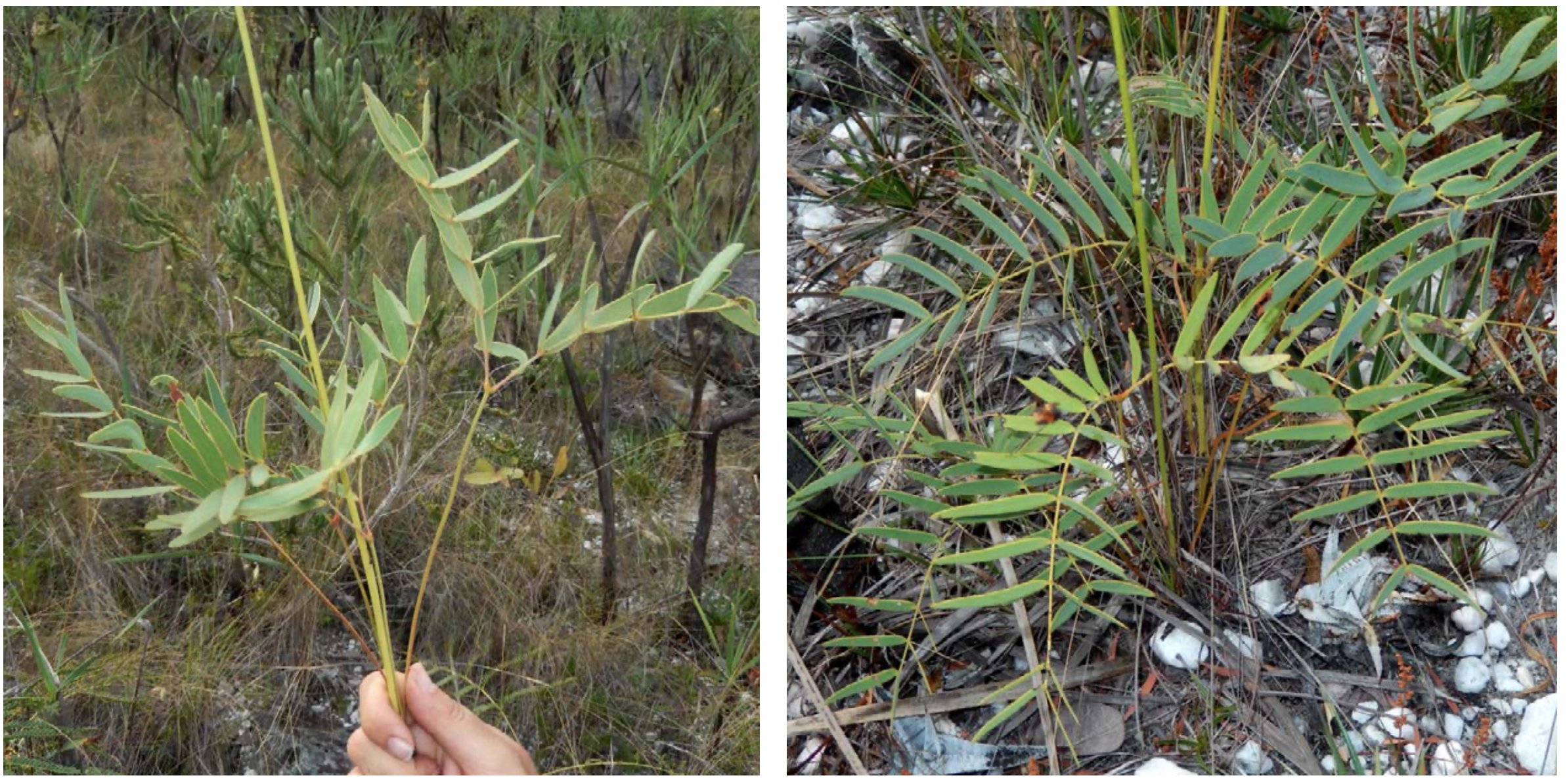 Mimosa pseudoracemosa (Photos: Moises Mendoza)
Mimosa pseudoracemosa (Photos: Moises Mendoza)
Mendes, T.P., Simon, M.F., Perez, A.P.F. and Da Silva, M.J., 2021. Novelties in Mimosa sect. Mimosa ser. Mimosa subser. Polycephalae: A new species, new status, and new synonyms. Phytotaxa, 505(2), pp.121-138. https://doi.org/10.11646/phytotaxa.505.2.1
Lespedeza danxiaensis, narrowly endemic on the summit of Mount Danxia, in Guangdong
Lespedeza danxiaensis Q. Fan, W.Y. Zhao & K.W. Jiang was discovered during field work in 2020. It is only known from ca. 100 individuals from the summit area of Mount Danxia in the Danxiashan National Nature Reserve in Guangdong Province, China and is readily distinguished by its unusual leathery leaflets.
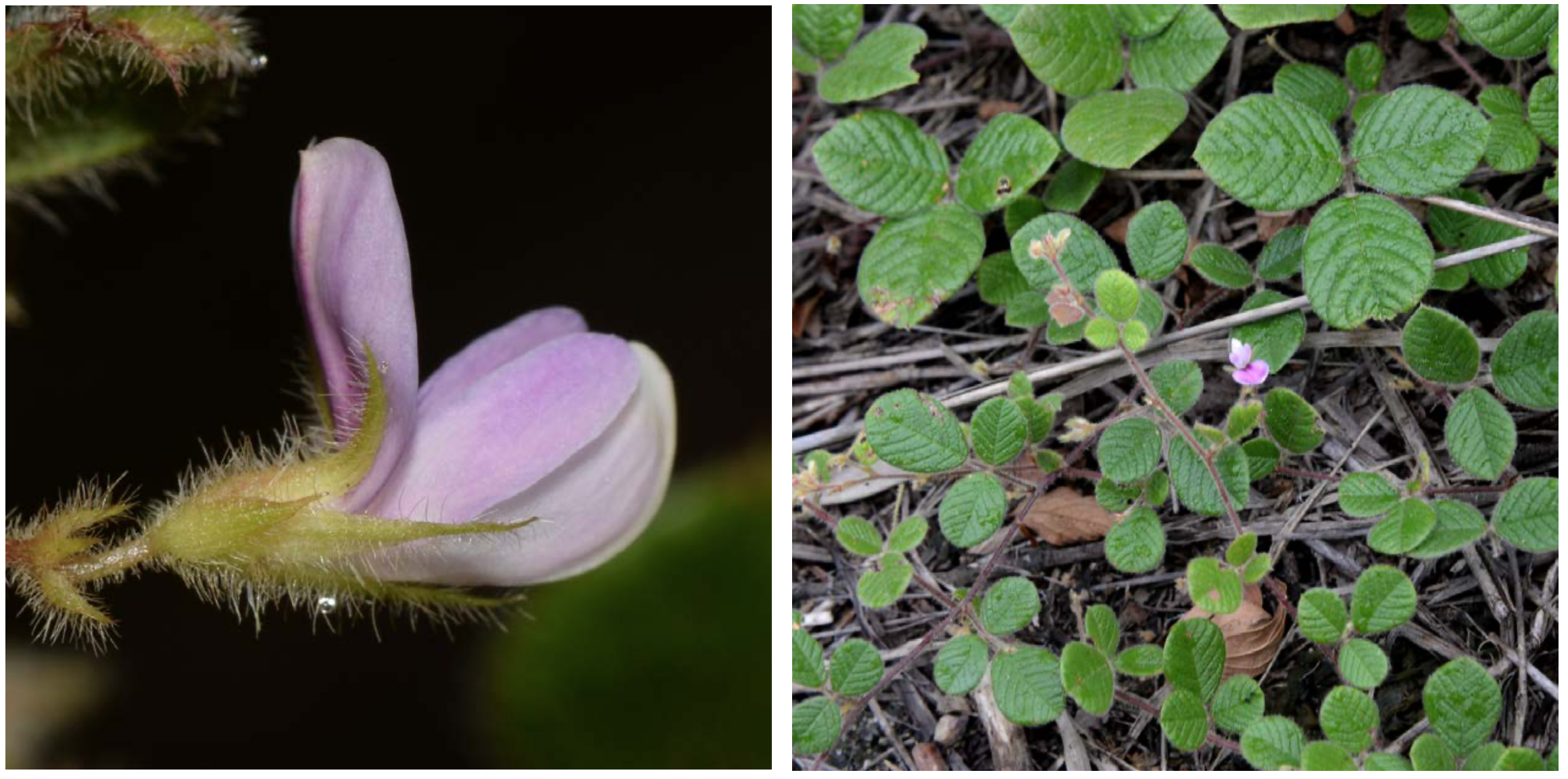 Lespedeza danxiaensis (Photos: Qiang Fan)
Lespedeza danxiaensis (Photos: Qiang Fan)
Zhao, W.Y., Jiang, K.W., Chen, Z.X., Tian, B. and Fan, Q., 2021. Lespedeza danxiaensis (Fabaceae), a new species from Guangdong, China, based on molecular and morphological data. PhytoKeys, 185, p.43. https://doi.org/10.3897/phytokeys.185.72788
A new Hedysarum from Uzbekistan
Of the c. 160 species of Hedysarum, more than half are distributed in central Asia with especially high levels of endemism in the Tien Shan Mountains and the SW Pamir-Alay in Uzbekistan where this new species is narrowly endemic. Hedysarum sunhangii Juram. & Tojibaev is named in honour of the Chinese botanist, Prof. Hang Sun, who promoted botanical collaboration between Uzbekistan and China.
 Hedysarum sunhangii (Photos: Inom Juramurodov)
Hedysarum sunhangii (Photos: Inom Juramurodov)
Juramurodov, I., Tojibaev, K., Nikitina, E., Makhmudjanov, D., Yusupov, Z., Deng, T. and Dehkanov, D., 2021. Hedysarum sunhangii (Fabaceae, Hedysareae), a new species from Pamir-Alay (Babatag Ridge-Uzbekistan). Phytotaxa, 524(1), pp.1-13. https://doi.org/10.11646/phytotaxa.524.1.1
Polhillia stirtoniana
Legume workers will be delighted to see this new species, Polhillia stirtoniana du Preez named in honour of Charles Stirton for his work on Cape legumes and for his assistance in the formation of the Overberg Renosterveld Conservation Trust and establishment of the Haarwegskloof Private Nature Reserve and research centre in South Africa. The binomial is even more apt given that the genus Polhillia was established by Charles Stirton in honour of the eminent legume systematist Roger Polhill. This species, alongside two others newly described, was published as part of an excellently detailed and abundantly illustrated taxonomic monograph of Polhillia that brings the number of species in the genus to 11.
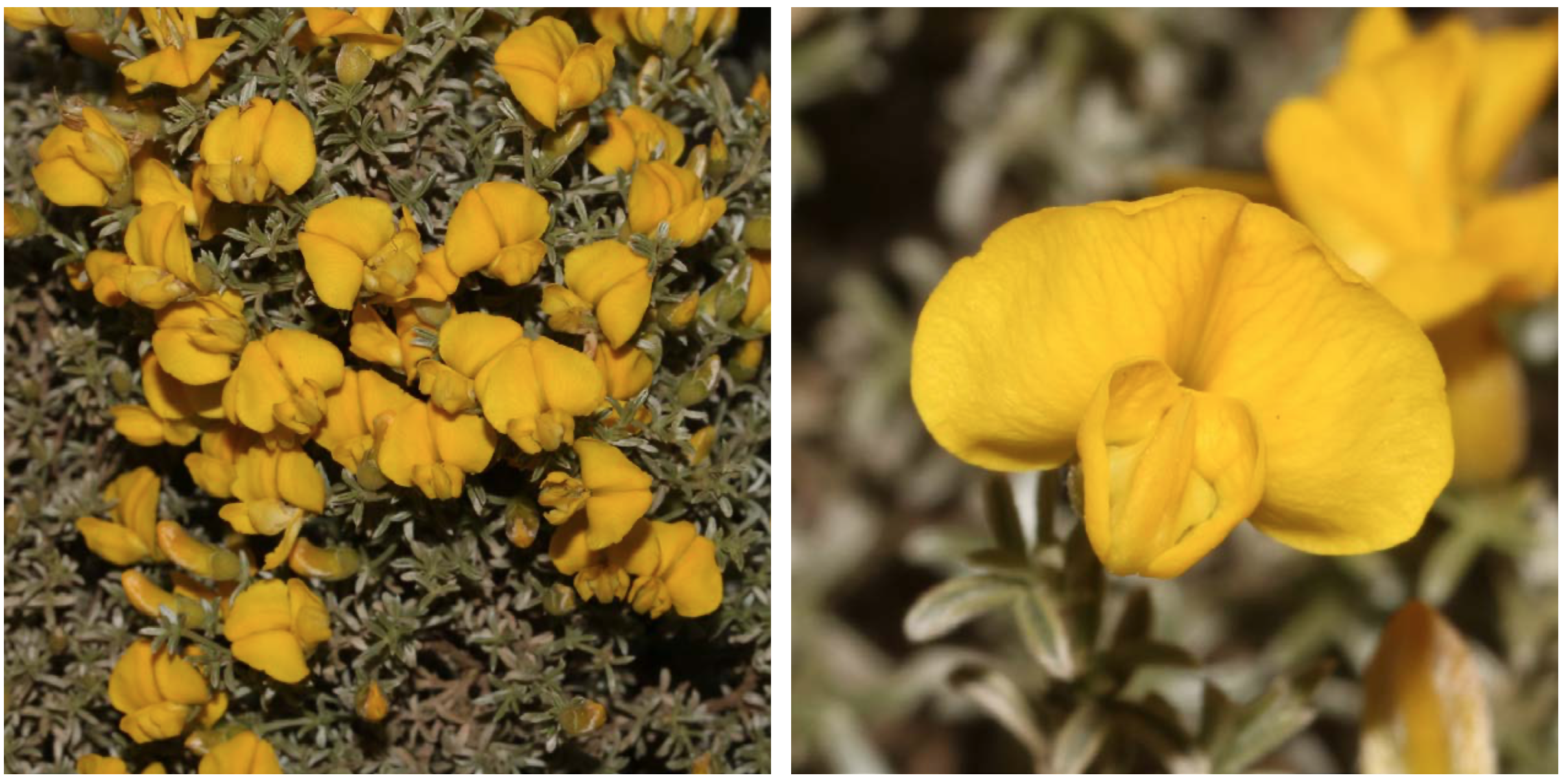 Polhillia stirtoniana (Photos: Brian du Preez)
Polhillia stirtoniana (Photos: Brian du Preez)
du Preez, B., Dreyer, L.L., Stirton, C.H. and Muasya, A.M., 2021. A monograph of the genus Polhillia (Genisteae: Fabaceae). South African Journal of Botany, 138, pp.156-183. https://doi.org/10.1016/j.sajb.2020.12.022
A new Indigofera from the Cape biodiversity hotspot
Several legume genera form large species radiations in the Fynbos vegetation of the Cape Flora of South Africa, including a large endemic clade of the genus Indigofera with ca. 90 species. Indigofera wenholdiae du Preez & Schrire is the first of several new species that are being described for this clade.
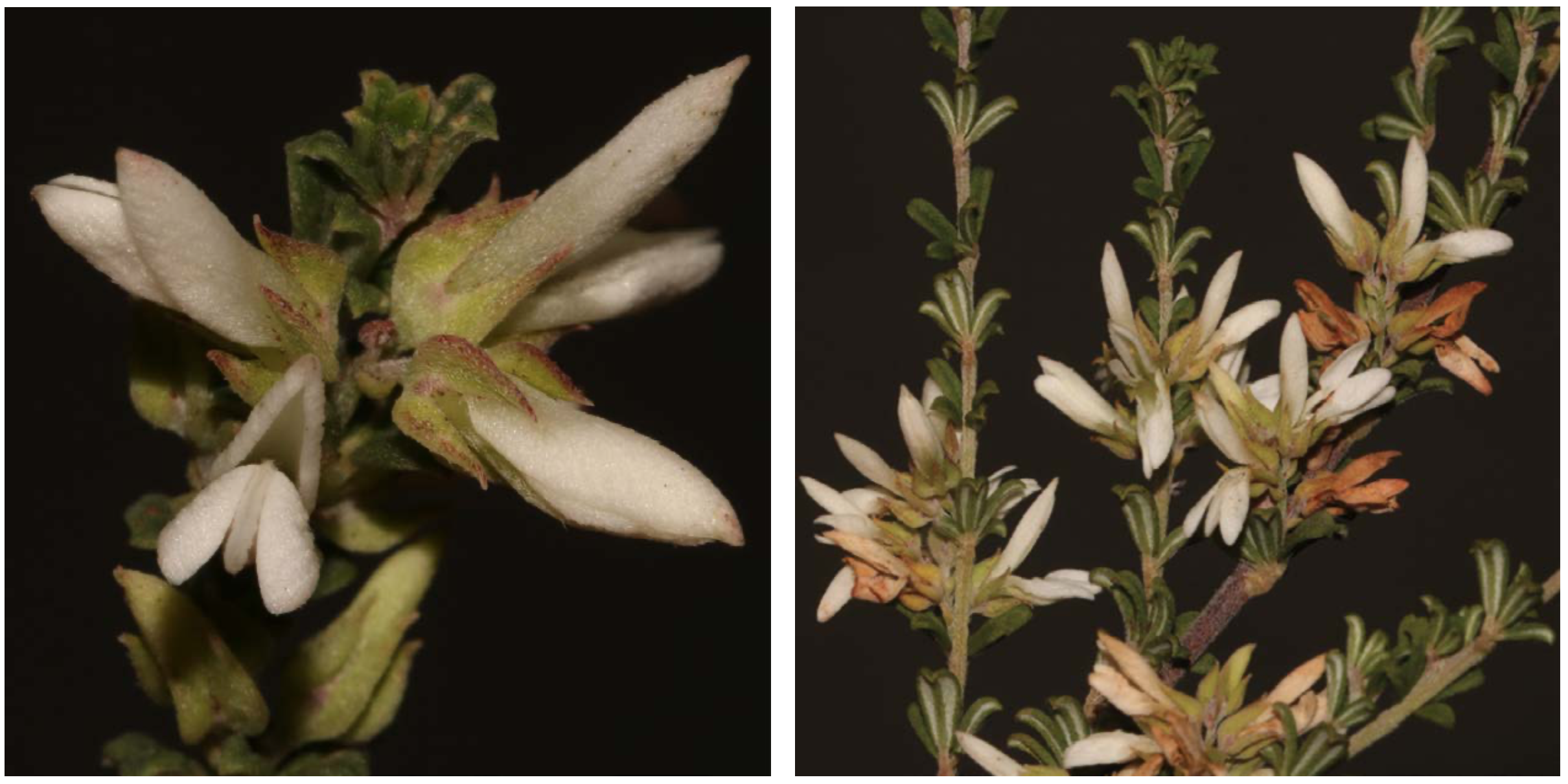 Indigofera wenholdiae (Photos: Brian du Preez)
Indigofera wenholdiae (Photos: Brian du Preez)
du Preez, B., Dreyer, L.L., Stirton, C.H., Muasya, A.M. and Schrire, B.D., 2021. Indigofera wenholdiae (Indigofereae, Fabaceae), a new species from the Western Cape Province, South Africa. PhytoKeys 182: 107–112. https://doi.org/10.3897/phytokeys.182.72170